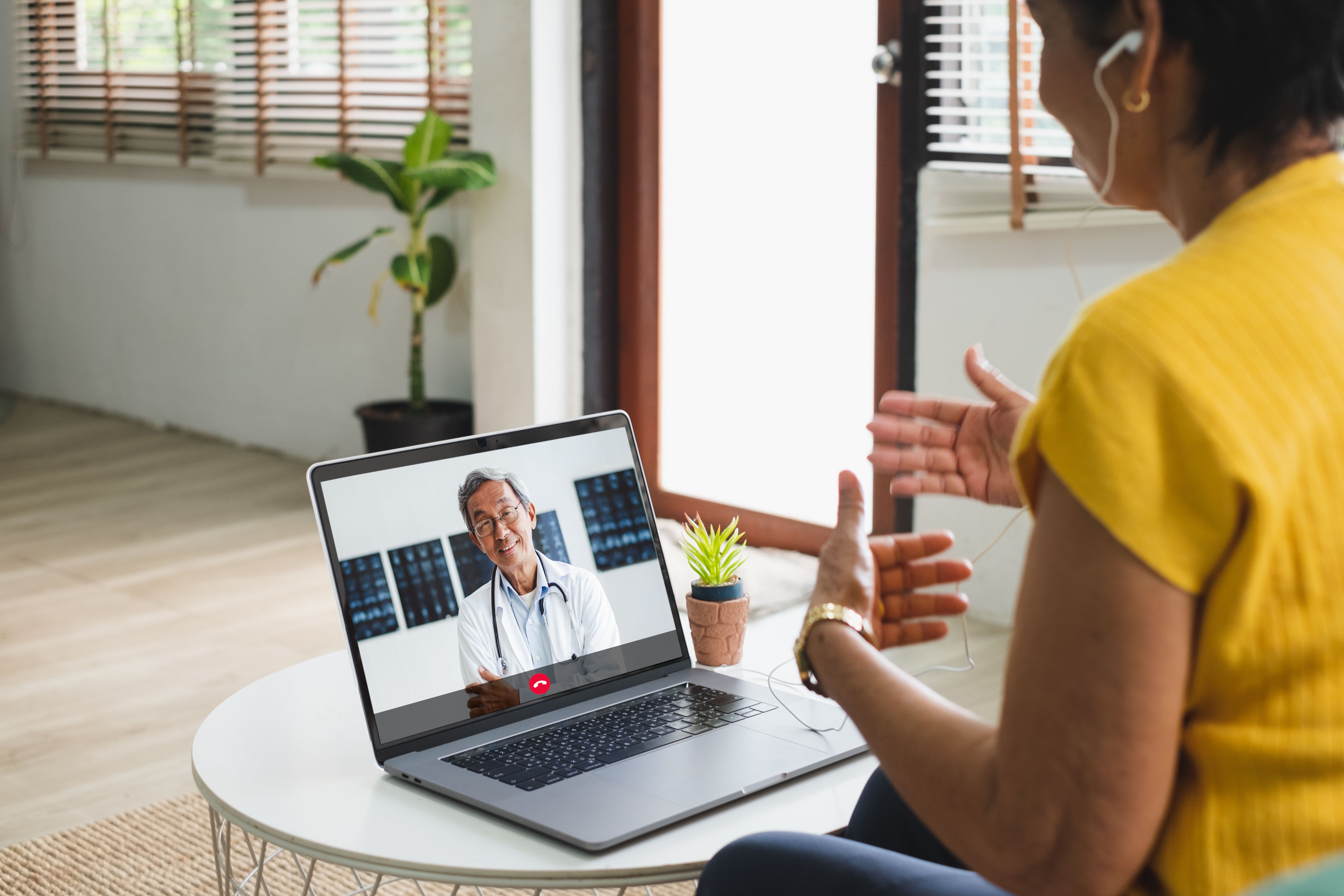News
Article
Patients With Melanoma, Clinicians Report Telehealth Consultations Are Beneficial When Combined With In-Person Care
Author(s):
Despite patients and clinicians preferring in-person consultations, most patients reported that clinicians answered all questions and effectively resolved issues during remote consultations.
Since the COVID-19 pandemic, telehealth has become a more accessible method for individuals to receive remote care and consultation from their health care providers. Although telehealth provides opportunities for those who face barriers when receiving consultation, others worry that remote care may be less effective than in-person consultation. A study published in Cancer Medicine explored the satisfaction of patients with melanoma and clinicians with telehealth consultations that were conducted during the COVID-19 pandemic. The investigators also identified if there were any demographic, clinical, and psychological factors related to patient satisfaction.
Image credit: Nattakorn | stock.adobe.com

This prospective, cross-sectional study utilized self-reported questionnaires that were submitted by patients with melanoma and clinicians. Patients were eligible for the study if they had a previous diagnosis of melanoma, received at least 1 telehealth consultation from a MIA-affiliated clinicians at one of the participating study sites between March 2020, and February 2022, had English language skills, and were at least age 18 years. Further, patients were excluded if they were diagnosed with another skin condition (eg, non-melanoma skin cancer) and if the telehealth consultations were irrelevant to their management of melanoma.
Clinicians were eligible if they practiced as a health care professional the provided care for patients diagnosed with melanoma, practiced at 1 of the included study sites, and if they provided at least 1 telehealth consultation between March 2020 and February 2022. Clinicians were not included if they used telehealth to provide management of non-melanoma conditions.
A total of 115 patients with melanoma and 13 clinicians responded to the surveys. Patients were surveyed on their satisfaction with telehealth, the amount of trust they had in their oncologist, quality of life, and fear of cancer recurrence. Additionally, clinicians were surveyed on their satisfaction with telehealth.
When recording telehealth satisfaction among patients and clinicians, qualitative questions aimed to elicit factors that influenced their perception of telehealth, its benefits and barriers, as well as preferences for future consultation (eg, “What factors influenced your satisfaction with telehealth,” “What are the biggest barriers of telehealth for you and why,” “What could be done to make telehealth more helpful," and “Do you prefer telehealth or face-to-face appointments and why?”).
The study results indicate that the majority of patients felt as though their clinicians had answered their questions (92%; n = 107), engaged them in their care (85%; n = 98), and were effective when finding solutions to problems (80%; n = 92). Further, the majority of patients felt as though their privacy was protected during telehealth (80%; n = 92), and that telehealth had saved time (77%; n = 89). In addition, 88 patients (76%) felt confident about the skills of their clinicians. The least positively rated items indicated that a minority of patients agreed that telehealth improved their health (76%; n = 88), involvement in their care (17%; n = 19), and management of their medical needs (22% n = 25), whereas 41 patients (36%) agreed that telehealth improved the overall monitoring of their melanoma.
Patients with early-stage melanoma were more likely to report lower satisfaction than those with advanced melanoma (t(87) = -2.88, p < 0.01, d = -0.61), and patients who used telehealth for the first time had significantly lower satisfaction than those who had used it before (F(2,94) = 6.12, p < 0.01, η2 = 0.13). In addition, significant weak associations were found between higher satisfaction with telehealth and higher trust in the oncologist (r(90) = 0.28, p < 0.01), lower care delivery and communication concerns (r(91) = −0.29, p < 0.01) and fewer supportive care concerns (r(90) = 0.29, p < 0.01).
Overall, 57 patients with melanoma (50%) and 9 clinicians (69%) preferred face-to-face consultations, with an additional 38 patients (33%) and 3 clinicians (23%) preferring a combination of both face-to-face and telehealth consultations. Only 5 patients (4%) had preferred telehealth consultations, and 15 patients (13%) and 1 clinician (8%) reported no preference.
Further, both patients and clinicians had identified disadvantages of telehealth at clinical, personal, interpersonal, and system levels, including lack of familiarity, discomfort, distracting, difficulty communicating and establishing rapport, and increased fatigue. Despite the drawbacks experienced by both patients and clinicians, the safety, convenience, and improved access to care were noted as advantages to remote care. In addition, patients reported experiencing lower costs due to reduced travel and feeling comfortable having appointments in their own homes.
Limitations of the study include low recruitment rates leading to potential selection bias, potential recall bias as a result of inconsistent telehealth consultation times, and lack of generalizability of results due to data coming from 3 sites. In addition, the investigators noted that the small clinician sample size was insufficient to investigate factors associated with clinician satisfaction with telehealth, limiting generalizability; however, clinician views remained consistent with the patients’ reports.
The study authors note that future research should be conducted in larger population groups and include patients with different types of cancer. Despite the small population size studied, the investigators note that telehealth can continue to offer opportunities for patients to meet with their health care providers, particularly for those with limited access to care.
Reference
Al-Rikaby A, Sulaiman A, Thompson JR, et al. Telehealth follow-up consultations for melanoma patients during the COVID-19 pandemic: Patient and clinician satisfaction. Cancer Med. 2023. doi:10.1002/cam4.6679
Newsletter
Stay informed on drug updates, treatment guidelines, and pharmacy practice trends—subscribe to Pharmacy Times for weekly clinical insights.






